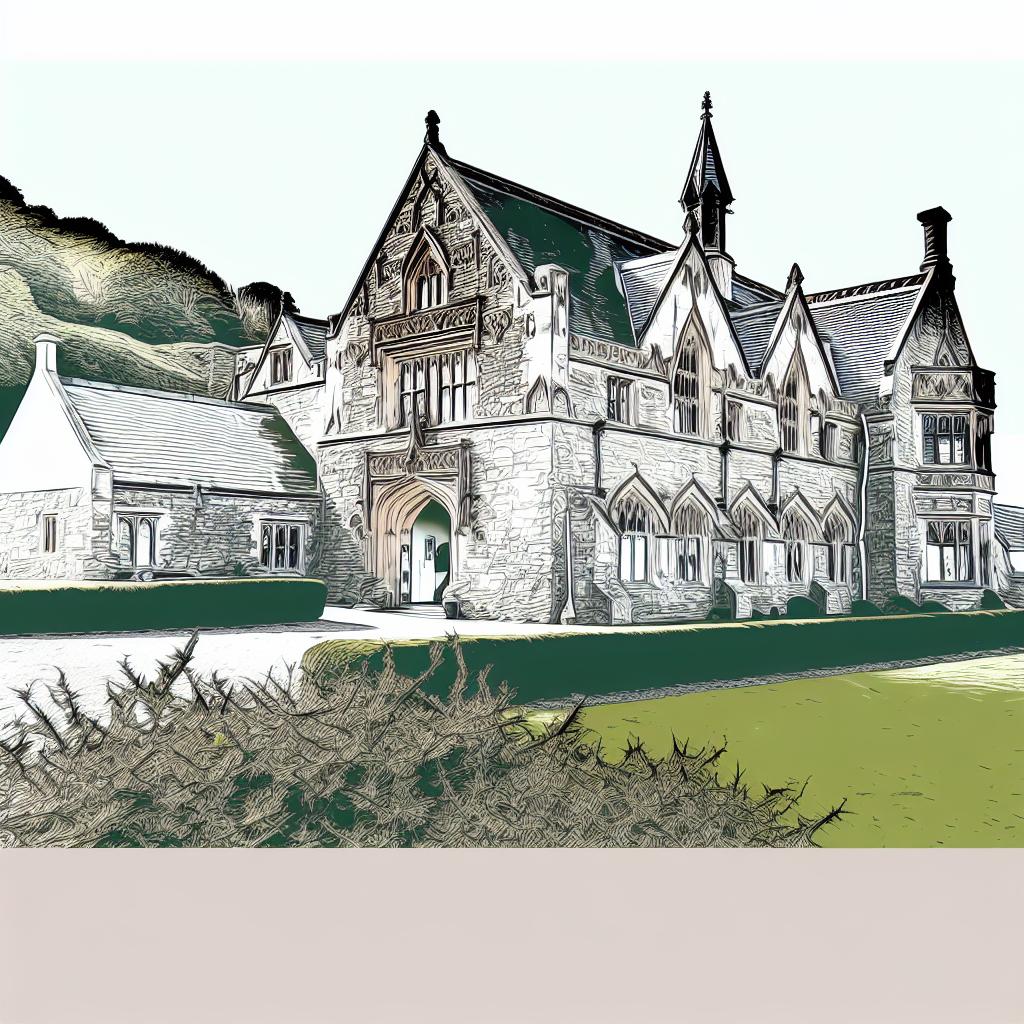Contents
Overview of Strawberry Hill House
Strawberry Hill House, situated in Twickenham, London, stands as an exemplary manifestation of Gothic Revival architecture. Constructed during the 18th century, it epitomizes the design zeal and innovative intellect of its mastermind, Horace Walpole. The process of building Strawberry Hill commenced in 1749 and spanned more than two decades, reaching well into the 1770s. Through continual evolution, the house emerged as a structure that fully encapsulates the essence of Gothic architectural attributes.
The Origins and Inspiration
The Gothic Revival movement, which rose to prominence in the 18th century, marked a departure from the classical styles then prevalent. It embraced medieval Gothic architecture, aiming to resurrect its grandeur and intricacy. Strawberry Hill House is emblematic of this revivalist movement, drawing inspiration from ancient Gothic cathedrals and castles. Hallmarks of the revivalist style are evident in the structure’s sharp pointed archways, sophisticated detailing, and the thoughtful integration of medieval motifs.
Design and Architecture
Frequently described as an *architectural fantasy*, Strawberry Hill House boasts a picturesque and theatrical presence. This distinctive appearance stems from elements such as battlements, turrets, and stained glass. Each contributes to a unique façade that captivates the imagination. Internally, numerous elegant rooms reflect the principles of Gothic aesthetics, featuring fan vaulting and gilded moldings that capture the eye.
Horace Walpole’s Vision: Walpole was deeply involved in the curation of the house’s design, relying on the expertise of several renowned architects and artists, including Robert Adam and John Chute. His aspiration was to create a space that would not only captivate visually but also provoke intellectual inspiration and contemplation.
Significant Architectural Details
A notable aspect of Strawberry Hill House lies in its ornate gallery, which epitomizes Gothic design. Its ceilings and decorative details are elaborate, embodying the grandeur Walpole aspired to achieve. Furthermore, the house features distinct *round-arched windows* and trefoil motifs, contributing significantly to its overall character.
Role of Materials: In a clever approach to design, materials such as plaster and wood were utilized to replicate traditional stonework. This strategic choice facilitated the creation of intricate designs while optimizing cost-effectiveness and construction efficiency.
Legacy and Influence
The impact of Strawberry Hill House on subsequent Gothic Revival buildings is monumental. It established new architectural precedents, influencing architectural developments both in Britain and internationally. As a cultural landmark, Strawberry Hill presents an invaluable study for admirers of historical architecture.
Horace Walpole’s vision has endured through the passage of time as his creation anchors itself as a pivotal structure in the Gothic Revival movement. This influence spread across numerous buildings, securing its position within both national and international architectural narratives. A deeper exploration of Gothic Revival architecture and the intricate details of Strawberry Hill House can be continued on Strawberry Hill House’s official website.
The legacy of Strawberry Hill transcends its physical structure. It stands as a testament to the creativity and innovative mind of its creator, making an indelible mark on the history of architecture. While the house itself offers a stunning aesthetic experience, the concepts it embodies and the history it represents continue to intrigue and inspire those with a passion for the architectural arts.

